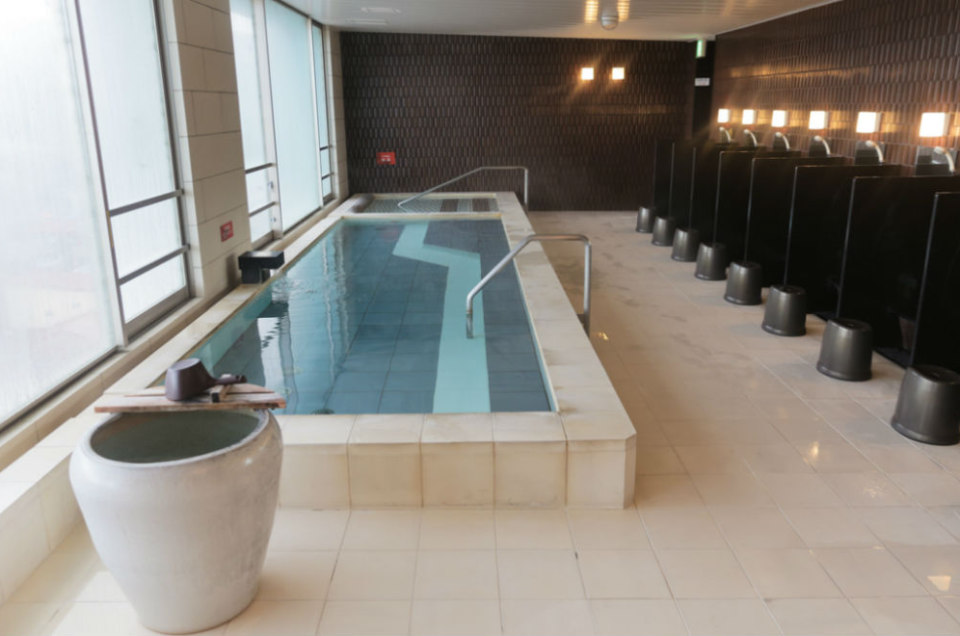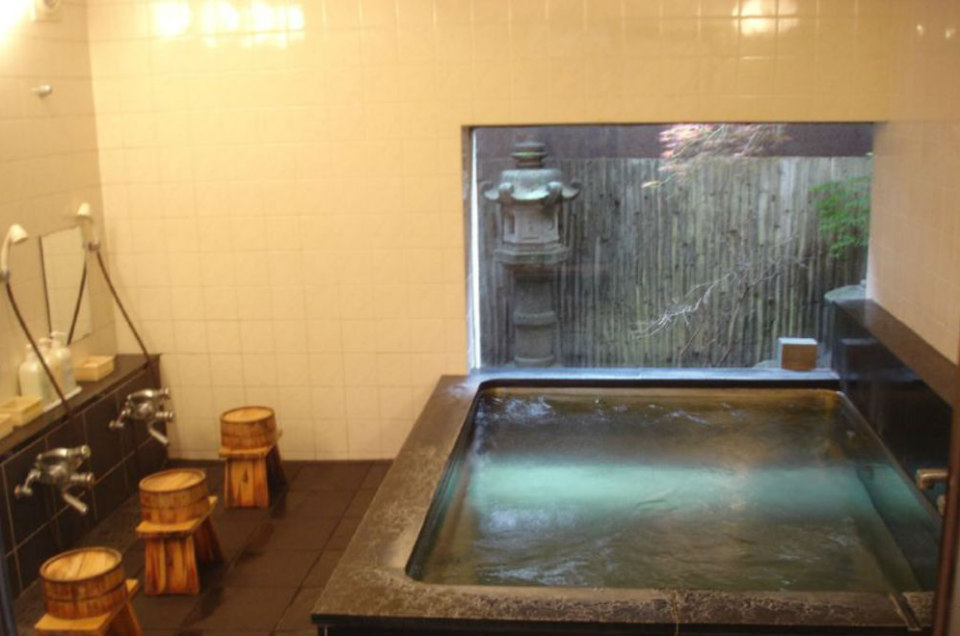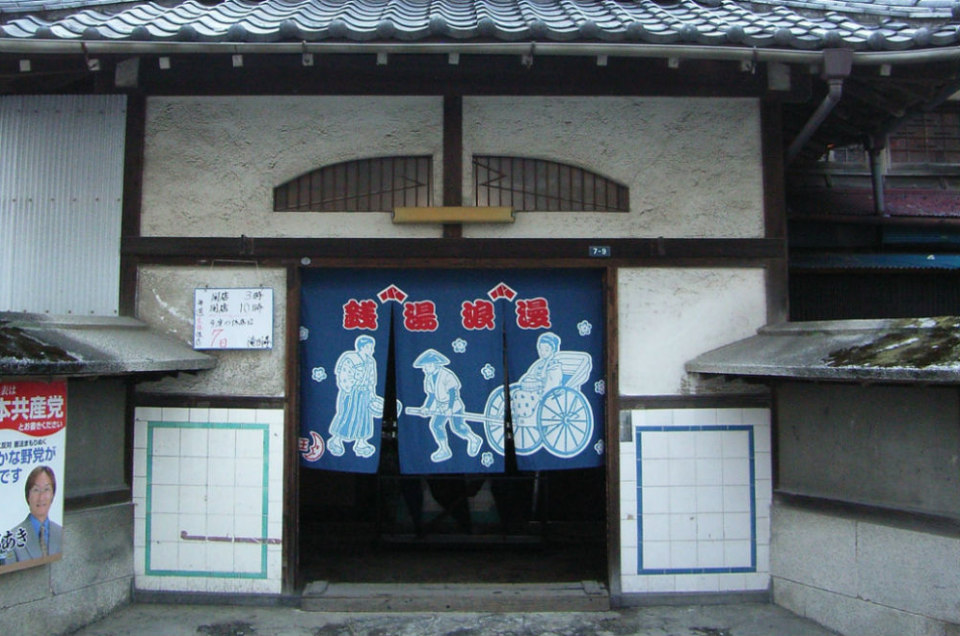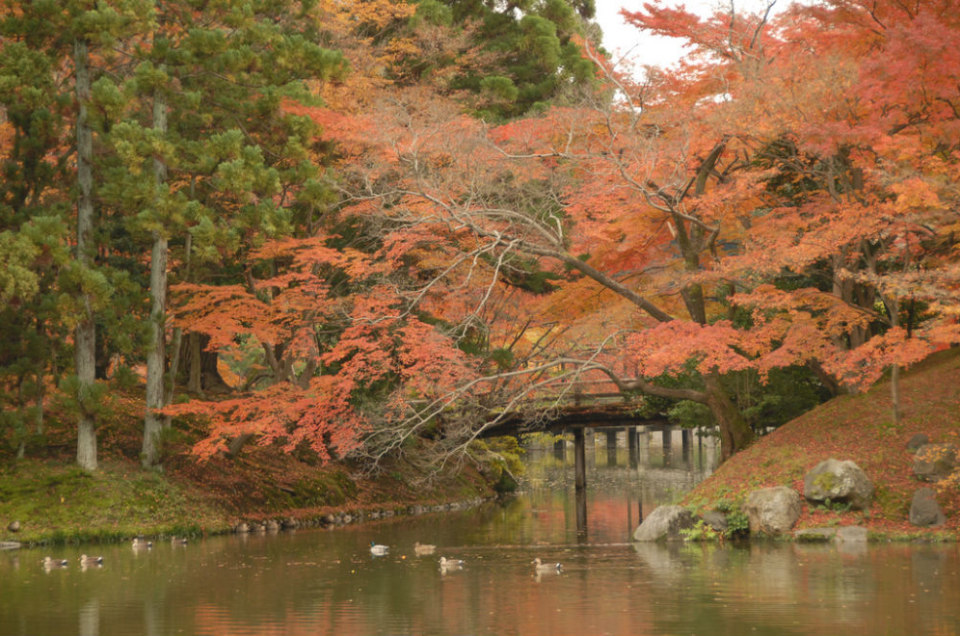Standing in the changing room with a robe cinched tightly around my waist, I noticed a naked group of women giving me a quick once over then covering their mouths with cupped hands to conceal giggles. I was the only non-Japanese woman there and clearly I wasn’t following some kind of protocol. I can take it, I said to myself as I began to disrobe. I appreciate a good soak so much that I thought nothing of traveling some 7,000 miles—and enduring a little mockery—just to take a bath.
Well before the days of indoor plumbing, there were nearly 20,000 public bathhouses all over Japan. And as much as I would’ve liked to plunge in all of them, I was happy enough to visit a handful in the Niigata and Yamagata Prefectures. Best of all, soaking in a centuries-old ritual promised a cleansing of body and soul.
In Japan, where the bathing ritual takes on social and spiritual proportions, water is not just used for washing dirt off the body. In Shinto—the main religion of Japan until the introduction of Buddhism in the 8th century—misogi means purification by water. Shintoism deems nature as sacred and every object embodies a kami (spirit).
To be in contact with nature is to be close to the Gods and, not coincidentally, many shrines have been erected near sacred spots like hot springs.
Cloaked in a thick white fog, I walked briskly through the forest with only the sound of snow crunching beneath my snowshoes. Lost in my thoughts with only the silent trees around me, I began to understand how one might revere every stone, river and leaf. As a new layer of snow coated the naked trees as delicately as powdered sugar on Christmas cookies, I quickened my pace back to the traditional inn where I was staying. In modern day Japan, these ryokan and their guest-only public onsen have substituted the old-fashioned bathhouses, or sento, where men and women once bathed together.
Like everything else in Japan, the bathing ritual comes with its own set of rules. (As I discovered, not tying your yukata, or robe, correctly might incite quiet laughter from locals. Women tie theirs left panel over right; men the opposite way.) Indeed, even Japanese-culture enthusiasts might be surprised by the ceremonial customs and the propriety that entail a ryokan experience—from the elaborate tea ceremony to custom-designed robes and impeccable greetings and bows performed by everyone from the housemaid to the lady of the house.
It was at dinner after a dozen or so mini courses, each more perfect than the last, that I was introduced to a perfectly coiffed woman of a certain age dressed in a stunning yellow silk kimono. She was the okami and had devoted her life to the ryokan’s operations and management, just like her mother and grandmother before her. Not just a hotel manager, an okami is a model of traditional Japanese service and hospitality and is depended upon by the local community to carry on the customs and traditions of the region’s past. It is not surprising that despite the futuristic cityscapes, the cyberpunks and fashionistas Japan is famous for, it remains a country instilled in ancient traditions. Here, the act of soaking in a natural-fed hot spring goes beyond the habitual.
Easing into the outdoor rock pool as daintily as I could muster, I held my breath for a few seconds until my body got used to the heat and my muscles relaxed. Listening to the distant sound of nocturnal birds and other creatures, I watched as a new blanket of fresh white powder enveloped the cedar forest. There was no way of telling whether my spirit was being purified but within minutes I felt infinitely better, my mind certainly cleansed of thoughts of work and other nonsense. The only thing I was aware of was that my trip would soon come to an end. But what’s a few thousand miles between a good bath and me.
FINDING YOUR PERFECT ONSEN EXPERIENCE
IN YAMAGATA An onsen lover’s paradise, this is the only prefecture in Japan where every municipality has its own hot spring area. Ski with Snow Monsters at Zao Hot Springs Ski Resort (where powerful snowstorms turn fir trees into ethereal shapes. Uesugi Snow Lantern Festival in Yonezawa features over 1300 snow lanterns glowing with gentle candlelight. Miyamaso-takamiya is a lovely inn renovated by Zao-native and renowned Ferrari designer Ken Okuyama. Ginzan Onsen, a quaint town frozen in time, is located in the heart of the mountains and surrounded by traditional inns and more than 47 natural hot spring baths. Fujiya Ryokan is Japan’s only ryokan ran by an American woman, Jeanie Fuji.
IN NIIGATA Deep in the heart of Snow Country, the city of Tokamachi hosts a number of traditional events and is a great place to snowshoe and ski. The Snow Festival includes food stalls, dance and music performances and astounding snow sculptures. The streets fill with young women in traditional dresses during the Kimono Festival. Built 200 years ago and modeled on an upper-class vassal’s residence, Ryugon is a beautiful ryokan located in Muikamachi, 40 minutes by train from Tokyo.
The Ryokan Collection comprises the most well-appointed traditional inns in Japan. The website features a handy Ryokan Manual to help the uninitiated. Kayotei, in the hot spring village of Yamanaka, is one of their newest members.



